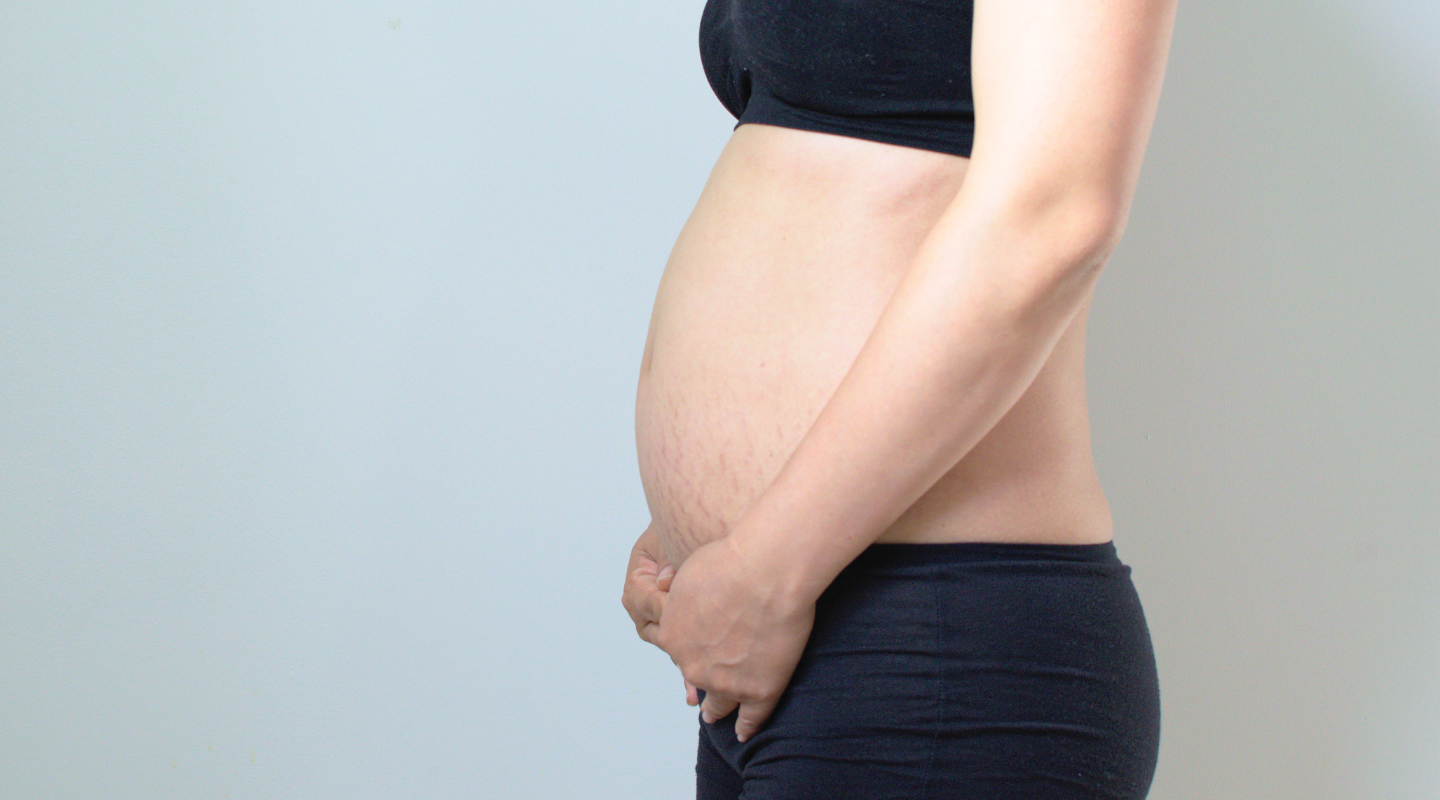
Updated July 19, 2022
Tiger stripes. Baby love bites. “You earned them” they tell you. But you may not want to keep them. That’s right, stretch marks. Stretch marks are common —Between 50 to 90 percent of women are affected by them — but little research has been done on the topic because they are not a medical concern. These marks are neither painful nor harmful, but for some, it is an aesthetic concern.
In scientific terms, stretch marks are line-shaped lesions known as striae. What we do know about stretch marks are that they appear when a person grows or gains weight rapidly such as during pregnancy. Commonly found on the breasts, hips, thighs, and torso they start as red-ish, glossy skin and over time may turn more whitish with a different texture than the surrounding skin. (1)
An article published in the British Journal of Dermatology, took a microscopic look at striae and found the elastic fibers in skin that give it the ability to “snap back” after stretching remain disrupted in the area where a stretch mark forms. (2) Compounding this effect, it is also thought that the hormones that help soften pelvic ligaments and increase their flexibility during pregnancy also work to soften skin fibers. (3)
Many creams, gels, lotions, and cosmetics are advertised to prevent or reduce the appearance of stretch marks. However, several studies have found little to no evidence that these interventions work. Creams and oils can help with dryness and itchiness but have not shown promise of treating stretch marks. (3) (2)
While you may not be able to prevent stretch marks completely, there are way to reduce your risk. During pregnancy, eating a healthy diet and maintaining a healthy weight are the top ways to prevent the formation. Aiming for slow, steady weight gain will also help prevent the tearing of your skin’s elastic fibers. For those with a normal BMI, it is recommended you gain 1 pound per week during your second and third trimesters. (4)
Our pregnancy nutrition guidance gives you all you need to know about eating a nutrient-dense diet that will benefit you and your baby. Pair that with a prenatal fitness program, and you’ll be taking the right steps toward managing weight gain in pregnancy, as well as feeling the best you can physically and mentally. Be sure to grab our Prenatal and Postnatal Exercise Guide for tons of information on how to exercise safely and effectively during pregnancy and after — including the most important exercises to incorporate into your routine for a strong, functional, responsive core.
There is no guaranteed way to stop or get rid of stretch marks aside from maintaining a healthy weight. However, eating a well-balanced diet loaded with vitamins and minerals can promote a healthy weight and skin health. Focusing on antioxidants that are good for your skin — such as beta-carotene and vitamins C, E, and A — not only helps you but also meets the nutritional needs of your growing baby. These vitamins work to aid in skin cell creation and collagen formation. Incorporating the following foods into your diet may help prevent stretch marks:
Zinc is another nutrient that can help when it comes to stretch marks. It is a necessary mineral found in foods and helps produce collagen. Foods high in since are:
Healthy fats are also important for skin elasticity. Focus on more omega-3s and incorporating these into your diet:
The final component is hydration. Drinking enough fluids throughout pregnancy is important for many reasons but when you boost your skin’s hydration it can keep your skin elastic and maintain normal production of collagen.
Bottom Line: The best treatment for reducing the occurrence and severity of stretch marks is maintaining a healthy weight and eating foods that are good for your skin. However, you will likely still have some marks and it’s important to remember… you brought a baby into this world (or several) and your body is amazing for that!